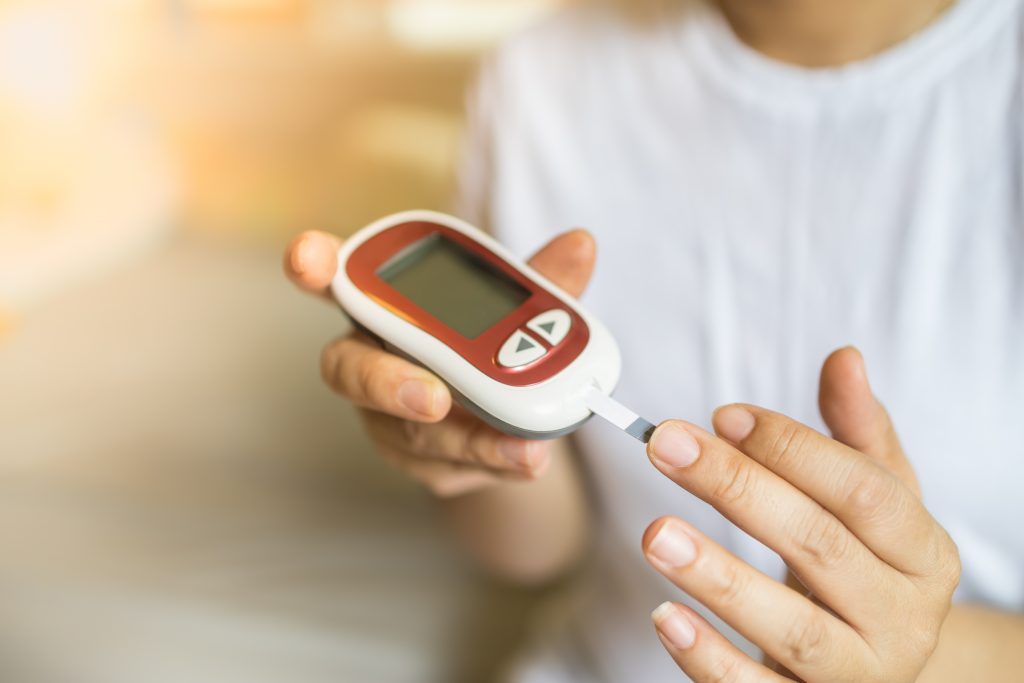8 Essential Strategies for Blood Sugar Management
8 Useful Blood Sugar Management Techniques

Blood sugar offers your body the fuel it needs to function at its optimal level. However, the delivery of this fuel must be done steadily to avoid disrupting the body’s overall function. Blood sugar management is not an easy task and requires knowledge, effort and consistency.
The food you eat is converted into glucose when digested. When the glucose enters your bloodstream, the pancreas receives the signal to release insulin. Insulin is a hormone that directs your muscle cells and fat to absorb the blood glucose and transform it into energy.
Your blood glucose level fluctuates throughout the day, depending on your food consumption and physical activity. While this is not a major concern for many individuals, it can be challenging for the ones struggling to produce insulin, as it can result in severe complications. Without proper management of blood sugar, you may experience hypoglycemia (low blood sugar) or hyperglycemia (high blood sugar).
Fortunately, there are ways to manage your blood sugar level and maintain your overall health. Here are eight strategies for better blood sugar management:
1. Stick to Schedule

If you have diabetes or are at risk of getting it, your doctor can help you to create the right treatment or prevention plan as per your needs and condition. It is highly recommended that you stick to the medication plan prescribed by a medical professional without skipping any doses.
Following a proper routine helps keep your blood sugar level stable. Try to plan your meals and eat them around the same time every day. Sticking to a meal schedule and being consistent with your medications can help with blood sugar management.
2. Make Healthy Eating a Lifestyle

Following a healthy diet is one of the most effective ways of managing your blood sugar level. A combination of carb-containing food with fat and protein slows down the digestion process and stabilizes the fluctuations in blood sugar.
A study found that adding fat or protein to pure glucose can significantly reduce the responses of blood sugar. The findings stated that fat and protein independently also offer similar effects.
Other studies have found that the Mediterranean diet can lower the levels of fasting glucose more efficiently in comparison to low-fat diets in type 2 diabetics. The diet focuses on the consumption of whole grains and good fats. Additionally, individuals following this diet have also been found to have an 83% reduced risk of diabetes.
Another review study concluded that a diet rich in fiber has a positive impact on the levels of blood sugar among type 2 diabetics.
3. Start the Day Right

Skipping breakfast every day can increase the risk of your blood sugar level elevating by 37% by noon as compared to the individuals who have breakfast. Therefore, make sure to start your day right with a healthy breakfast to maintain the stability of your blood sugar levels.
4. Stay Hydrated

Keeping yourself hydrated is also an integral part of blood sugar management. Dehydration can cause your blood sugar to become more concentrated and result in an increase. Make sure to keep a water bottle with you whenever you head out and take a few sips throughout the day.
5. Be Consistent with Blood Sugar Testing

Being consistent with testing your blood sugar is a good way of assessing how your body reacts to different habits. The results of the tests will be highly valuable in helping you stabilize your blood glucose level. You don’t necessarily have to do this every day, three to four times a week may be sufficient. However, it is important to consult your doctor to determine the frequency as per your condition.
6. Stay Active

Staying physically active also plays a role in blood sugar management. When you exercise, your muscles burn the blood sugar for energy. Studies show that a high-intensity exercise performed in brief spurts can improve the blood sugar levelsof diabetic individuals and non-diabetic healthy individuals for almost three days after that workout.
7. Manage Your Stress Levels

In a state of prolonged stress, the hormones produced by the body can increase the level of blood sugar. Make sure to utilize effective ways of managing stress to control your blood sugar. Learn the right strategies to cope with stress through healthy means and identify your triggers to avoid a spike or dip in your blood glucose level.
8. Educate Yourself

It is important to be aware of your condition if you want to enjoy optimal health. Many individuals with diabetes are leading a healthy and full life by staying informed and strictly following a customized blood sugar management plan. Don’t hesitate to ask your doctor or medical team as many questions as you want.
Self-evaluation is critical in devising the right plan for you as per your condition. Consult a dietician and other specialists to make the necessary lifestyle changes, and join support groups for tips and suggestions, as well as to remind yourself that you are not alone in this.
The more you learn about your own symptoms and changes in blood sugar level, as well as the reaction of your body, the better you and your doctor can create, modify and implement a strategy to manage your blood glucose level.
Living with diabetes may seem like a continuous struggle of stabilizing your blood sugar levels to maintain your health. Catching a complication early on increases the chances of getting the right treatment on time.
Establishing a blood sugar management plan, as per your requirements, with the guidance of your doctor can play a massive part in helping you live your life to the fullest with diabetes. These tips and recommendations can also help individuals at a high risk of diabetes. Even the smallest of changes in your lifestyle can drastically help.
Check out our Hydrate and Regulate Blood Sugar EBook here to learn more.
The more you educate yourself about blood sugar management, the more in control of your health you will be.
References
- https://www.ncbi.nlm.nih.gov/books/NBK279012/
- https://academic.oup.com/jn/article/136/10/2506/4746688
- https://spectrum.diabetesjournals.org/content/24/1/36
- https://www.bmj.com/content/336/7657/1348?ijkey=dde0da2b8d73929f0a534dd665636de00488927b&keytype2=tf_ipsecsha
- https://www.jabfm.org/content/25/1/16.full
- https://care.diabetesjournals.org/content/38/10/1820?sid=860338a6-3135-4cc4-a97f-79b3aa292367
- https://www.ncbi.nlm.nih.gov/pubmed/21994426
- https://www.ncbi.nlm.nih.gov/pmc/articles/PMC3587394/
- https://www.todaysdietitian.com/newarchives/111609p38.shtml




